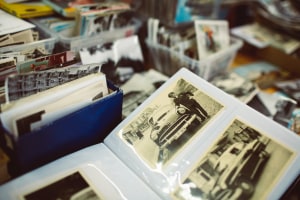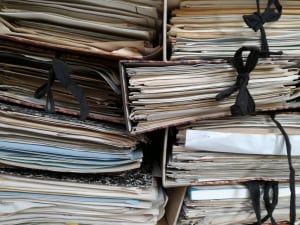Storing Your Precious Media Materials
Once you have your items digitized it unlocks your long-term viewing options for the future, but your original materials are precious and nothing can replace them. A physical photo, slide or film reel can have an significant amount of sentimental value. As a partner in helping you preserve your original media, here are some tips from the National Archives on how to effectively store your photos, negatives, films and slides to prevent damage for future generations.
Storage Options
Organization can feel overwhelming with all the storage options out there. Here are some suggestions from the National Archives on finding the appropriate storage containers for your media.
- Photo Boxes with spacers to help with organization and/or photo albums that have plastic sleeves to hold the pictures/slides/negatives without damaging the contents are a safe way to keep materials organized.
- Avoid albums that have adhesive or magnetic properties.
- Make sure all items fit and do not overstuff a box or pocket to prevent bends, creases or tearing upon removal.
- The materials that are touching your pictures, whether in an album or storage box, should be lignin-free and acid-free, or if you are placing them in albums, the photos are in sleeves made of stable plastics such as polyester, polypropylene or polyethylene.
Location, Location, Location
Avoid areas in your home that have large temperature swings like an attic, or that may hold a lot of moisture such as a basement or outbuilding.
The optimal climate to store various forms of media would be one with humidity below 65% and the temperatures below 75 degrees. This helps prevent mold growth and insects. A higher temperature can promote mold growth and the beginning of the temperature chemical decay.
This is just a brief set of tips for storing your old media. To learn more visit https://www.archives.gov/preservation/family-archives/storing




